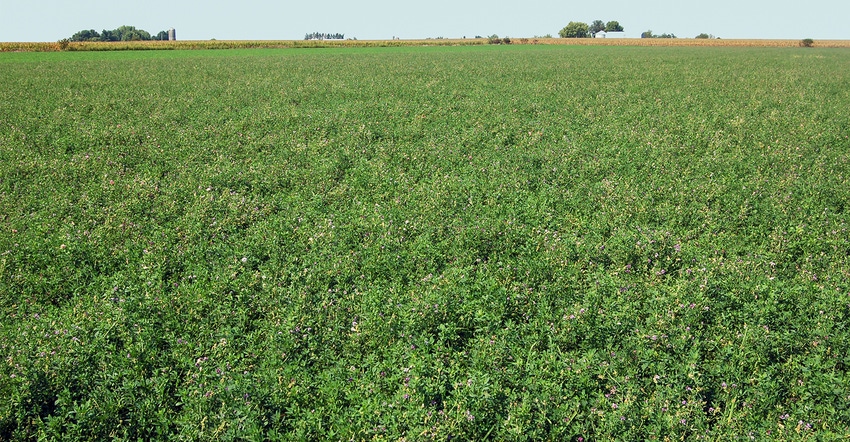August 15, 2017

Good stands in pasture and hay fields don’t just happen. They result from careful planning and attention to detail.
Here are six steps to follow to increase the odds of success and minimize chances for failure when seeding forages.
1. Plan ahead. Did you base preparation on current soil tests? Did you start this process far enough in advance that you can correct things like low pH before you intend to plant?
2. Correct soil fertility issues in advance. Lime is the big one. If the pH is lower than recommended, make plans to apply lime as far ahead of seeding as possible. Remember that alfalfa requires higher pH levels than grasses and some other legumes. Raise pH levels to at least 6.5 for alfalfa. Levels below 6.5 may be adequate for red clover.
If you have limited pasture or hay acreage, finding someone to spread lime may be a challenge. Some dealerships only apply lime at certain times of the year.
3. Match species you intend to plant with soil types. The classic example is alfalfa. The queen of forages doesn’t like wet feet. Adjust your rotation so you can seed alfalfa in fields with better soil drainage. Avoid poorly drained soils for alfalfa.
4. Time the seeding properly. Don’t plant too late. Seeding on time is critical to establishing new forage stands. If you’re seeding in the fall, seedlings will need September to grow and get a foothold so plants will have adequate growth going into winter. Sept. 15 is too late to plant some forages. If you’re frost-seeding a crop like red clover in late winter, time it so germination and early growth can happen in a timely manner.
5. Select varieties with the best chance to succeed in your area. Work closely with a seed dealer who has experience in selecting and selling grass and legume seed. Avoid buying seed if the variety is not stated. It will usually just say “NS” after “variety” on the tag. Typically if a grass says variety not stated, you’re getting Kentucky 31 tall fescue. There are newer, “friendly endophyte” varieties that will provide better animal performance than Kentucky 31. If you buy variety not stated alfalfa seed, you may be buying an old variety, Vernal. You will get longer life and better production out of the stand if you invest in a newer variety.
6. Select the correct seeding rate and proper seeding method. Typically growers seed orchardgrass with alfalfa rather than attempting to establish a pure alfalfa stand. A standard recommendation is 4 pounds of orchardgrass and 12 to 15 pounds of alfalfa per acre. If you’re seeding orchardgrass or tall fescue alone, shoot for 8 to 10 pounds per acre.
Doing a good job of seeding requires achieving adequate seed-to-soil contact. Typical seeding depth is about a quarter of an inch. If seed is buried too deep, the stand will likely be reduced.
Parker raises hay, cattle and timber near Morgantown.
About the Author(s)
You May Also Like




